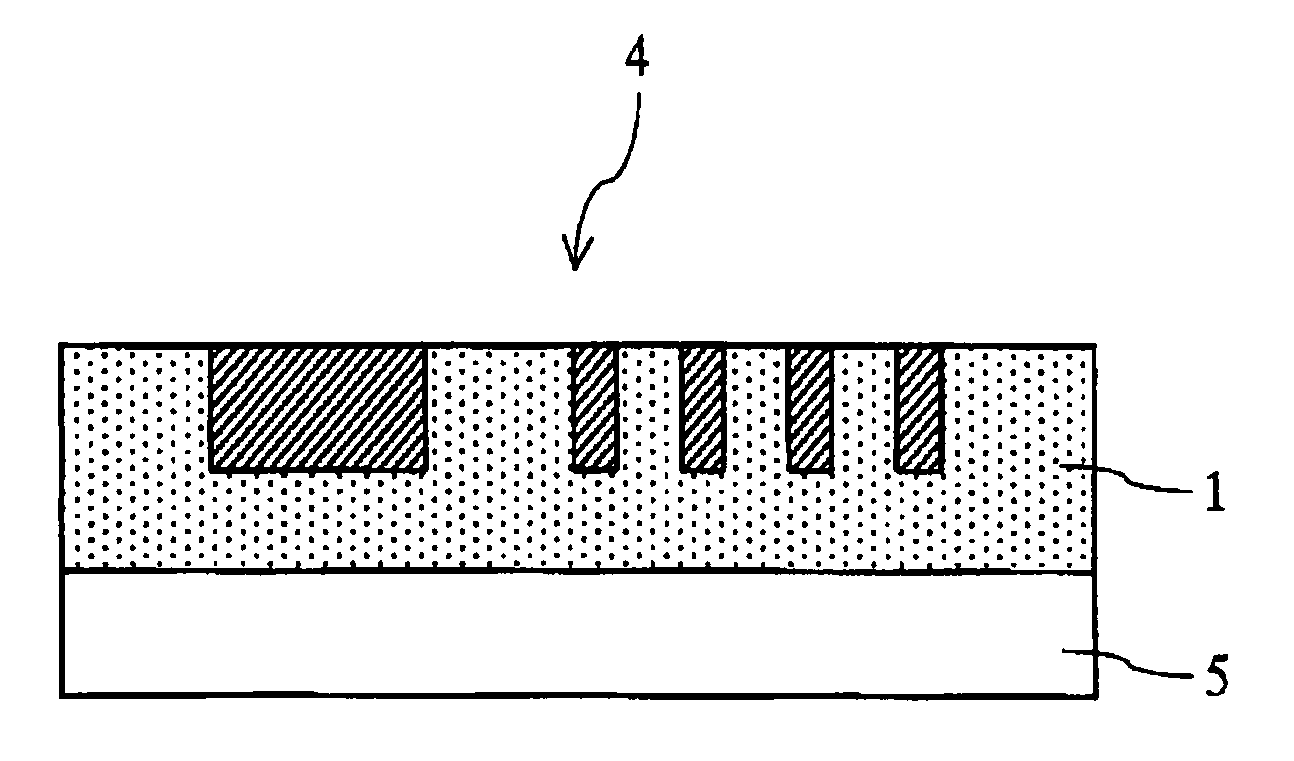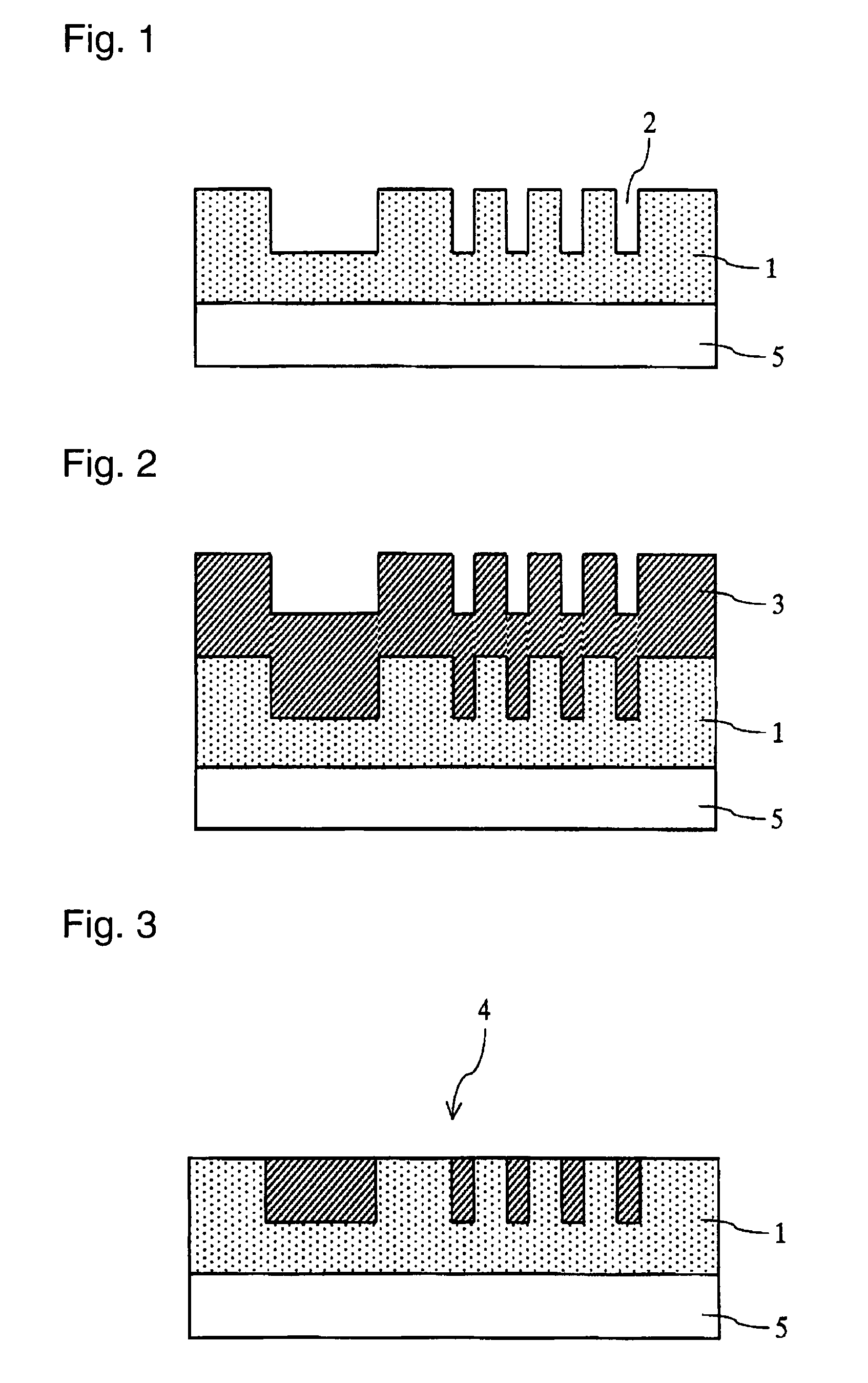Polishing compound and polishing method
- Summary
- Abstract
- Description
- Claims
- Application Information
AI Technical Summary
Benefits of technology
Problems solved by technology
Method used
Image
Examples
first examples
Polishing Compounds
[0107]As polishing compounds, those shown in a Table 1 were used. Examples 1 to 13 are Examples of the present invention, and Examples 14 to 18 are Comparative Examples. Further, “carbonate ions and hydrogencarbonate ions” are shown by the sum of the concentrations of the respective ions. As the α-alumina, “α-alumina 1 μm” (the average particle size is 1 μm) manufactured by Wako Pure Chemical Industries, Ltd, was used.
Object to be Polished
[0108]As the supporting board, a metal wafer having a thickness of 500 μm and a diameter of 6 inches was used, and on the wafer, a resin substrate having a thickness of 50 μm was laminated. Then, by plating, a copper film having a thickness of 30 μm was formed thereon.
Polishing Conditions
[0109]The polishing was carried out under the following conditions.
[0110]Polishing machine: Polishing machine 6EC, manufactured by Strasbaugh
[0111]Polishing pad: IC-1400 K-Groove, manufactured by Rodel, Inc.
[0112]Polishing compound supply amount:...
second examples
Polishing Compounds
[0118]As polishing compounds, those shown in Table 5 were used. Examples 19 to 36, Examples 41 to 43 and Examples 45 to 50 are Examples of the present invention, and Examples 37 to 40 and Example 44 are Comparative Examples. As the α-alumina, TAIMICRON TM-D manufactured by TAIMEI Chemicals Co., Ltd was used.
Object to be Polished
[0119]A square chip of 45×45 mm, prepared by cutting a Blanket copper wafer for a CMP testing, manufactured by Advanced Technology Development Facility, Inc. (Model No. 000CUR071: one obtained by forming a thermally oxidized film having a thickness of 0.3 μm on a Si wafer having a diameter of 8 inches, and forming thereon a Ta film having a thickness of 50 nm by CVD and a copper film having a thickness of 100 nm by CVD, and a copper film having a thickness of 1.5 μm by plating).
Polishing Conditions
[0120]The polishing was carried out under the following conditions.
[0121]Polishing machine: A small-sized desktop lapping machine NF-300, manufac...
PUM
 Login to View More
Login to View More Abstract
Description
Claims
Application Information
 Login to View More
Login to View More - R&D
- Intellectual Property
- Life Sciences
- Materials
- Tech Scout
- Unparalleled Data Quality
- Higher Quality Content
- 60% Fewer Hallucinations
Browse by: Latest US Patents, China's latest patents, Technical Efficacy Thesaurus, Application Domain, Technology Topic, Popular Technical Reports.
© 2025 PatSnap. All rights reserved.Legal|Privacy policy|Modern Slavery Act Transparency Statement|Sitemap|About US| Contact US: help@patsnap.com


